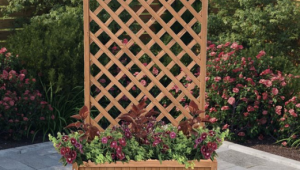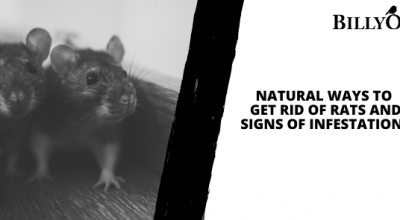Jump to:
Summer is just around the corner. It’s time to prepare your outdoor space for months of relaxation and entertainment. And what better place to start than your patio?
Your patio is an extension of your home. But before you invite friends and family over to soak up the warmth, give it a thorough cleaning. Doing so ensures a fresh and inviting atmosphere before the warm weather arrives.
In this blog, we’ll take you through the step-by-step cleaning process.
1. Understanding the state of your patio

Take note of any visible dirt, stains, mould, mildew, or discolouration. Observe the condition of the surface and any potential damage, such as cracks or loose tiles.
Pay attention to high-traffic areas or spots more prone to dirt accumulation. For one, the near entrances or beneath outdoor furniture. These areas may require extra attention and targeted cleaning.
Look for any signs of biological growth, such as moss or weeds, which can be indicators of damp or shaded areas. These areas will need specific treatment to eliminate the growth. And if your patio houses a BBQ or fire pit, clean such features separately.
Take note of the material your patio is made of. Common materials include concrete, wood, stone, or tile. Each material requires specific cleaning techniques and products to avoid damage.
2. Gather the tools and materials
Here’s a general list of essential tools for patio cleaning:
- Broom or stiff brush. Useful for sweeping away loose debris, leaves, and dirt from the patio surface.
- Pressure washer. Ideal for deep cleaning concrete, stone, or tile patios. Make sure to use an appropriate nozzle and follow manufacturer instructions.
- Garden hose. Helpful for rinsing off cleaning solutions and thoroughly wetting the patio surface.
- Scrub brush. Effective for scrubbing and agitating surfaces to remove stains, grime, or moss. Choose a brush with bristles suitable for your patio material.
- Soft sponge or cloth. Use for gentle cleaning of delicate surfaces or for applying cleaning solutions.
- Bucket. Essential for mixing cleaning solutions and carrying water for rinsing.
- Wet/dry vacuum. Optional but helpful for removing excess water or cleaning solutions.
- Extension pole. Useful for reaching high areas or cleaning windows or walls adjacent to the patio.
Environmentally-friendly cleaning solutions:
- Vinegar. Effective for removing mildew, mould, and stains. Mix equal vinegar and water in a spray bottle and apply it to the affected areas.
- Vinegar. Effective for removing mildew, mould, and stains. Mix equal vinegar and water in a spray bottle and apply it to the affected areas gently, then rinse.
- Hydrogen peroxide. Suitable for removing tough stains or discolouration. Dilute hydrogen peroxide with water and use it as a stain remover on the affected areas.
- Biodegradable soaps or detergents. Look for products that are phosphate-free and labelled as safe for outdoor use.
3. Prepare the patio

Start by removing all furniture, planters, decorations, and other items from the patio. This will provide you with a clear and unobstructed surface to work with.
If the furniture is too heavy to move, use furniture sliders or ask for assistance. Place the items in a safe and designated area away from the cleaning zone.
Next, sweep the entire patio surface using a broom or stiff brush. Remove any loose dirt, debris, leaves, and twigs. Start from one end and work your way towards the other, ensuring you cover the entire area.
Pay attention to corners, crevices, and hard-to-reach areas where debris tends to accumulate. Use a brush or broom bristles to dislodge stubborn dirt or debris from these areas.
Also, inspect the patio for any weed or moss growth. Remove any visible weeds or moss growth manually. Make sure you pull out the roots to prevent regrowth.
This preparation will ensure that the cleaning process is more effective and efficient.
4. Clean the patio surface

For tackling concrete patios:
- Clear the patio of any furniture or obstacles.
- Sweep or use a leaf blower to remove loose debris, dirt, and leaves.
- Prepare a cleaning solution by mixing water and a mild detergent. You may use a concrete-specific cleaner as an alternative.
- Apply the cleaning solution to the patio surface, working in manageable sections.
- Scrub the surface with a stiff-bristle brush. Or use a pressure washer with a low-pressure nozzle to agitate and remove dirt and grime.
- Pay special attention to any stained or heavily soiled areas. Apply additional cleaner and scrubbing as needed.
- Rinse the patio thoroughly with water. Ensure to remove all traces of the cleaning solution.
- Allow the patio to air dry completely before returning furniture or foot traffic to the area.
When dealing with wood patios:
- Hardwood: Sweep the surface to remove debris. Use a mixture of mild soap or a wood-specific cleaner and water to clean the wood, scrubbing with a soft brush. Rinse thoroughly and allow the wood to dry completely.
- Softwood: Follow the same cleaning process as hardwood. But use caution as softwood is more susceptible to damage. Use a softer brush and avoid using excessive water.
For cleaning stone or tile patios:
- Sweep or use a leaf blower to remove loose debris.
- Mix a mild detergent or a stone and tile-specific cleaner with water.
- Apply the solution to the surface and scrub with a soft brush or mop.
- Rinse the patio thoroughly with water, ensuring all cleaning residue is removed.
5. Tackling specific patio features

Removing stains and mildew in garden furniture and maintenance:
- For stains on furniture surfaces, mix a mild detergent with water. Apply the solution to the stain, and scrub gently. Rinse thoroughly and allow the furniture to dry.
- To remove mildew, create a mixture of equal parts water and vinegar. Apply the solution to the affected area, scrub with a brush, and rinse well.
- Regularly clean furniture surfaces by wiping them with a soft cloth. Or use a sponge dipped in a mild soap and water solution.
Cleaning outdoor cushions and fabrics:
- For removable cushion covers, follow the washing instructions provided. Use a mild detergent and cold water for best results.
- If the cushions are not removable, spot clean using a mixture of mild detergent and water. Blot the stain gently and rinse thoroughly.
- Allow the cushions and fabrics to air dry completely before using or storing them.
- Use protective covers for cushions and fabrics to shield them from the elements.
We hope these tips have helped you create a welcoming outdoor space for the summer!













What do you think ?